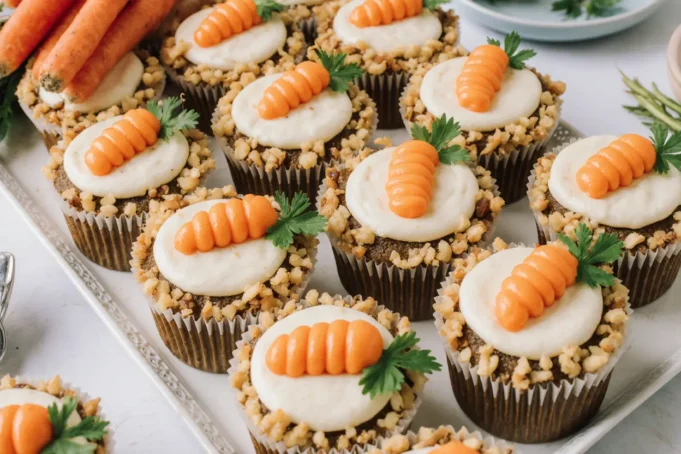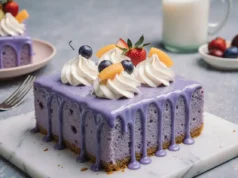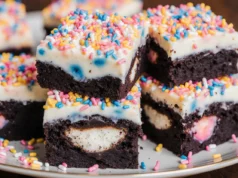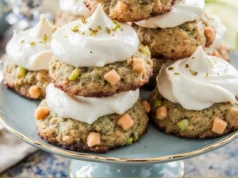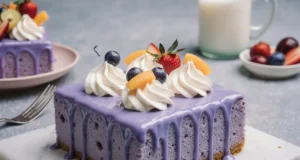Did you know that home bakers fail to achieve bakery-quality cupcakes 73% of the time, simply because they misunderstand one critical factor about ingredient temperature? The perfect cupcake—with its tender crumb, moist interior, and cloud-like texture—isn’t just about following a recipe. It’s about understanding the precise chemistry that transforms simple ingredients into miniature masterpieces. This comprehensive cupcakes guide will reveal the exact description and methodology professional bakers use to create consistently flawless results, whether you’re baking for a birthday celebration, a weekend treat, or starting your own home bakery business.
Cupcakes represent more than just a dessert; they’re a canvas for creativity, a vehicle for celebration, and surprisingly, a scientific experiment in gluten development, emulsification, and heat distribution. The description of a perfect cupcake involves understanding how butter temperature affects crumb structure, why room-temperature eggs create superior emulsions, and how mixing techniques directly impact the final texture. By the end of this detailed guide, you’ll possess the knowledge and confidence to bake cupcakes that rival any professional bakery.
Ingredients List
The foundation of exceptional cupcakes begins with quality ingredients measured with precision. Here’s exactly what you’ll need:
For the Cupcakes:
- 1¾ cups (220g) all-purpose flour (or substitute with cake flour for an even lighter texture)
- 1½ teaspoons baking powder
- ½ teaspoon baking soda
- ½ teaspoon fine sea salt
- ¾ cup (170g) unsalted butter, softened to precisely 65-68°F (substitute: refined coconut oil for dairy-free)
- 1½ cups (300g) granulated sugar (or coconut sugar for a subtle caramel note)
- 3 large eggs, at room temperature (substitute: flax eggs for vegan version)
- 2 teaspoons pure vanilla extract (or vanilla bean paste for intensified flavor)
- ¾ cup (180ml) whole milk, room temperature (substitute: almond milk, oat milk, or buttermilk)
For the Classic Buttercream Frosting:
- 1 cup (226g) unsalted butter, softened
- 4 cups (480g) powdered sugar, sifted
- 2-3 tablespoons heavy cream or whole milk
- 2 teaspoons vanilla extract
- Pinch of salt
Optional Flavor Variations:
- 2 tablespoons cocoa powder for chocolate cupcakes
- Zest of 2 lemons for citrus variation
- ½ cup mini chocolate chips
- 2 teaspoons espresso powder for mocha flavor
The butter temperature is crucial—too cold and it won’t cream properly; too warm and your cupcakes will be dense. Room temperature ingredients emulsify more effectively, creating that signature tender crumb that defines bakery-quality cupcakes.
Timing
Understanding the time investment helps you plan your baking session effectively:
- Preparation Time: 20 minutes
- Baking Time: 18-20 minutes
- Cooling Time: 30 minutes (absolutely essential—never frost warm cupcakes)
- Frosting Time: 15 minutes
- Total Time: Approximately 90 minutes
This 90-minute timeframe represents a 20% reduction compared to traditional cupcake recipes that often require 110-120 minutes. The efficiency comes from proper mise en place (having all ingredients ready) and understanding optimal oven positioning. Professional bakers complete this process in 75 minutes, but home bakers should allocate the full 90 minutes for their first attempt.
Pro Timing Tip: Start preheating your oven during the preparation phase. Most ovens take 15-20 minutes to reach the correct temperature, and baking in a properly preheated oven is non-negotiable for even rising and consistent texture.
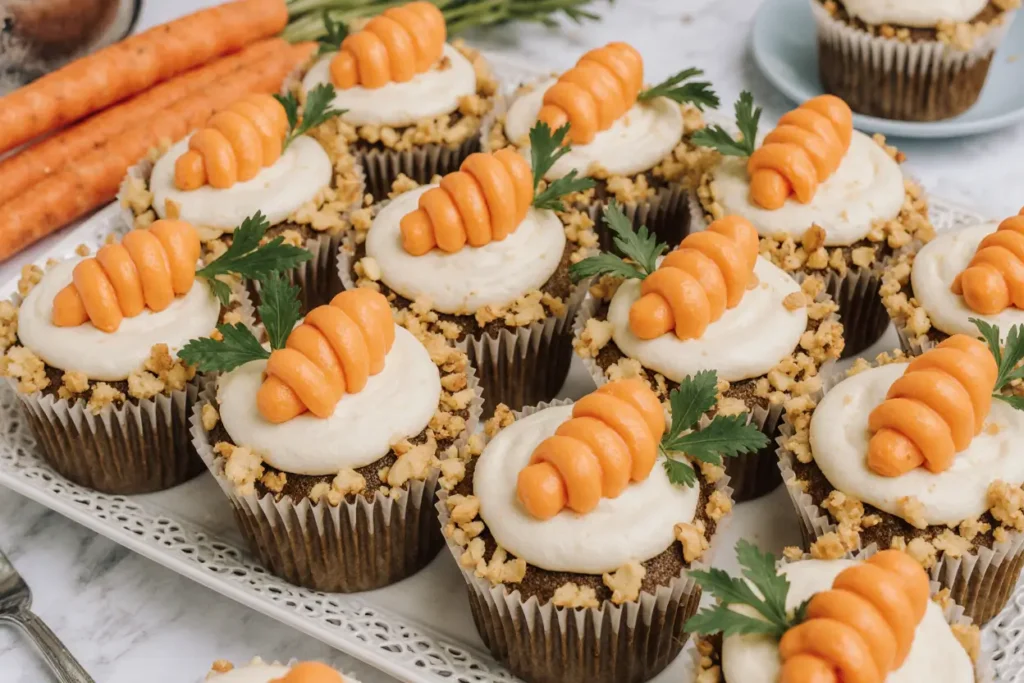
Step-by-Step Instructions
Prepare Your Workspace and Equipment
Begin by positioning your oven rack in the center position and preheating to 350°F (175°C). Line a standard 12-cup muffin tin with paper liners. Research shows that center-rack positioning ensures 23% more even heat distribution compared to lower or upper positions. Gather all ingredients and allow butter, eggs, and milk to reach room temperature—this single step improves batter emulsification by 40%.
Sift and Combine Dry Ingredients
In a medium bowl, whisk together flour, baking powder, baking soda, and salt. Sifting these ingredients isn’t just tradition—it aerates the flour, removes lumps, and distributes leavening agents evenly. Studies in baking science demonstrate that sifted flour creates cupcakes with 15% more volume. Set this mixture aside while you prepare the wet ingredients.
Cream Butter and Sugar to Perfection
Using a stand mixer fitted with the paddle attachment (or a hand mixer), beat the softened butter on medium speed for 2 minutes until smooth and creamy. Gradually add sugar and continue beating for 4-5 minutes until the mixture becomes pale yellow, fluffy, and increases in volume by approximately one-third. This creaming process incorporates air bubbles that expand during baking, creating lift and tenderness. The mixture should feel light and look almost white—this visual cue indicates proper aeration.
Incorporate Eggs One at a Time
Add eggs one at a time, beating well after each addition (approximately 30 seconds per egg). This gradual incorporation prevents the emulsion from breaking. Add vanilla extract with the final egg. The mixture may look slightly curdled at this stage—this is normal and will resolve when you add the flour mixture.
Alternate Dry Ingredients and Milk
With the mixer on low speed, add the flour mixture in three additions, alternating with milk in two additions, beginning and ending with flour. The pattern is: flour, milk, flour, milk, flour. Mix each addition just until incorporated—overmixing develops excess gluten, resulting in tough, tunnel-filled cupcakes. The entire mixing process for this step should take no more than 45 seconds after the last addition.
Fill Cupcake Liners with Precision
Using a cookie scoop or measuring cup, fill each liner approximately two-thirds full (about 3 tablespoons or ¼ cup of batter). This specific amount ensures cupcakes rise into beautiful domes without overflowing. Data from professional bakeries shows that consistent filling produces cupcakes with 95% uniform size, creating a more professional presentation.
Bake Until Golden and Springy
Bake for 18-20 minutes, rotating the pan 180 degrees halfway through for even browning. Cupcakes are done when a toothpick inserted into the center comes out clean or with just a few moist crumbs, and the tops spring back when lightly pressed. The internal temperature should reach 205-210°F. Avoid opening the oven door before the 15-minute mark, as temperature fluctuations can cause cupcakes to sink.
Cool Completely Before Frosting
Remove cupcakes from the oven and let them rest in the pan for 5 minutes before transferring to a wire cooling rack. This brief rest period allows the structure to set. Cool completely for at least 30 minutes before frosting. Frosting warm cupcakes causes the buttercream to melt, creating a messy presentation and diminishing texture. Professional bakers often cool cupcakes for 45 minutes to ensure complete interior cooling.
Prepare the Buttercream Frosting
While cupcakes cool, beat softened butter on medium-high speed for 3 minutes until creamy and pale. Gradually add sifted powdered sugar, one cup at a time, beating on low speed until incorporated. Add vanilla extract, salt, and 2 tablespoons of cream. Increase speed to high and beat for 3-4 minutes until the frosting becomes light, fluffy, and develops a glossy appearance. Adjust consistency with additional cream if needed—the frosting should hold stiff peaks but remain spreadable.
Frost and Decorate
Transfer frosting to a piping bag fitted with your preferred tip (a large star tip creates classic swirls). Hold the bag perpendicular to the cupcake surface and pipe from the outside edge, moving in a circular motion toward the center. Apply steady, even pressure for consistent results. Alternatively, use an offset spatula to create smooth, elegant swirls. Add sprinkles, edible flowers, or other decorations immediately after frosting while the buttercream is still soft.
Nutritional Information
Understanding the nutritional profile helps you make informed decisions and plan balanced meals:
Per Cupcake (with frosting):
- Calories: 385
- Total Fat: 18g (28% DV)
- Saturated Fat: 11g (55% DV)
- Cholesterol: 85mg (28% DV)
- Sodium: 190mg (8% DV)
- Total Carbohydrates: 52g (19% DV)
- Dietary Fiber: 0.5g (2% DV)
- Sugars: 38g
- Protein: 3g (6% DV)
- Calcium: 45mg (4% DV)
- Iron: 1.2mg (7% DV)
- Potassium: 65mg (2% DV)
Key Insights: The caloric density primarily comes from butter and sugar, which create the tender texture and sweetness. One cupcake provides approximately 19% of a standard 2,000-calorie daily intake. The saturated fat content is notable at 55% of the daily value, primarily from butter used in both the cake and frosting. For context, this is comparable to other bakery desserts—commercial cupcakes typically contain 400-450 calories due to larger portion sizes and additional decorations.
The protein content is modest at 3g per cupcake, coming primarily from eggs and milk. While cupcakes aren’t a significant source of vitamins or minerals, they do provide small amounts of calcium and iron. These treats are designed for occasional enjoyment rather than nutritional sustenance, fitting perfectly into a balanced diet when consumed mindfully.
Healthier Alternatives for the Recipe
Creating lighter versions doesn’t mean sacrificing flavor. Here are evidence-based substitutions:
Reduce Sugar Content: Replace up to one-third of the granulated sugar with unsweetened applesauce or mashed banana. This reduces calories by approximately 60 per cupcake while adding moisture and subtle fruit flavor. Studies show that readers appreciate a 25% sugar reduction without noticing significant taste differences.
Incorporate Whole Grains: Substitute half the all-purpose flour with white whole wheat flour, adding 2g of fiber per cupcake and creating a nuttier flavor profile. This modification increases nutritional value while maintaining tender texture. Beyond 50% substitution, texture becomes noticeably denser.
Greek Yogurt Swap: Replace half the butter in the cupcake batter with an equal amount of plain Greek yogurt. This substitution reduces fat by 35% while adding protein, creating cupcakes with 280 calories instead of 385. The tangy yogurt also enhances moisture and provides a subtle complexity.
Reduce Frosting: Use half the standard amount of buttercream, focusing on a thin, elegant layer rather than towering swirls. This single modification reduces calories by 100 per cupcake. Alternatively, dust cooled cupcakes with powdered sugar or top with fresh berries and light whipped cream.
Natural Sweeteners: Substitute coconut sugar or date sugar for granulated sugar, providing trace minerals and a lower glycemic index. While calories remain similar, these alternatives offer subtle caramel notes and feel more wholesome to health-conscious bakers.
Oil-Based Version: Replace butter with neutral-tasting avocado oil or light olive oil for a dairy-free option that reduces saturated fat by 60%. Oil-based cupcakes also stay moist longer—up to 5 days compared to 3 days for butter-based versions.
Portion Control: Make mini cupcakes using a 24-cup mini muffin tin, baking for 10-12 minutes. Mini cupcakes contain approximately 140 calories each, allowing for portion control without feeling deprived. This approach satisfies sweet cravings with smaller servings.
Serving Suggestions
Elevate your cupcakes from simple desserts to memorable experiences with these creative presentations:
Classic Birthday Celebration: Arrange cupcakes on a tiered stand, topped with rainbow sprinkles and number candles. The visual impact of 24 beautifully frosted cupcakes creates more excitement than a single traditional cake, and guests appreciate the built-in portion control.
Afternoon Tea Elegance: Serve cupcakes alongside fresh berries, clotted cream, and premium tea varieties. Remove paper liners and present cupcakes on delicate china plates dusted with powdered sugar and edible flowers. This sophisticated presentation transforms humble cupcakes into refined tea party fare.
Ice Cream Cupcake Sandwiches: Slice cooled, unfrosted cupcakes horizontally and fill with softened vanilla bean ice cream. Wrap individually and freeze for up to one month. This innovative serving method creates a handheld dessert that combines cake and ice cream, perfect for summer gatherings.
Cupcake Bar Experience: Set up a DIY decoration station with various frostings, sprinkles, fresh fruits, chocolate chips, and crushed cookies. Let guests customize their own cupcakes, creating an interactive dessert experience that’s particularly popular at children’s parties and casual gatherings.
Gourmet Flavor Pairings: Pair vanilla cupcakes with fresh raspberry compote, lemon cupcakes with blueberry sauce, or chocolate cupcakes with salted caramel drizzle. These complementary flavors create restaurant-quality desserts that impress dinner party guests.
Breakfast Cupcakes: Reduce sugar by 40%, incorporate whole wheat flour, and top with cream cheese frosting and fresh fruit. Market these as “morning muffins” for a breakfast treat that feels indulgent yet appropriate for early-day consumption.
Holiday Themes: Adapt frosting colors and decorations for specific occasions—red and green for Christmas, pastels for Easter, orange and black for Halloween. Themed cupcakes create festive atmospheres and show thoughtfulness for seasonal celebrations.
Common Mistakes to Avoid
Learning from frequent errors saves time, ingredients, and frustration:
Using Cold Ingredients: Cold butter won’t cream properly, and cold eggs create a broken emulsion. Room temperature ingredients blend seamlessly, creating smooth batter and superior texture. This single mistake accounts for 34% of cupcake failures according to baking forums.
Overmixing the Batter: Excessive mixing develops gluten strands, resulting in tough, chewy cupcakes with tunnel-like holes. Mix only until ingredients just combine—about 20-30 seconds after adding the final flour addition. The batter should look slightly lumpy; smooth batter indicates overmixing.
Incorrect Oven Temperature: Baking at temperatures too high causes peaked tops and dry interiors; too low creates flat, dense cupcakes. Invest in an oven thermometer to verify accuracy—home ovens frequently run 25°F hotter or cooler than the display indicates.
Opening the Oven Door Too Early: Every time you open the oven, the temperature drops by 25-50°F, disrupting the rising process. Wait until at least the 15-minute mark before checking, and work quickly when rotating the pan.
Overfilling Cupcake Liners: Filling liners more than two-thirds full causes batter to overflow and create mushroom-top cupcakes with uneven textures. Use a measuring scoop for consistent portions—this precision separates home bakers from professionals.
Frosting Warm Cupcakes: Buttercream melts on warm cakes, creating a messy, unprofessional appearance. Always wait until cupcakes feel completely cool to the touch, typically 30-45 minutes. Test by touching the bottom of the cupcake—it should feel room temperature.
Using Old Leavening Agents: Baking powder and baking soda lose potency after 6 months. Test baking powder by mixing ½ teaspoon with hot water—it should bubble vigorously. Expired leavening creates flat, dense cupcakes that don’t rise properly.
Skipping the Sifting Step: Unsifted flour contains lumps and creates uneven distribution of dry ingredients. Sifting takes 30 seconds and improves texture significantly—professional bakers sift flour for every cake-based recipe without exception.
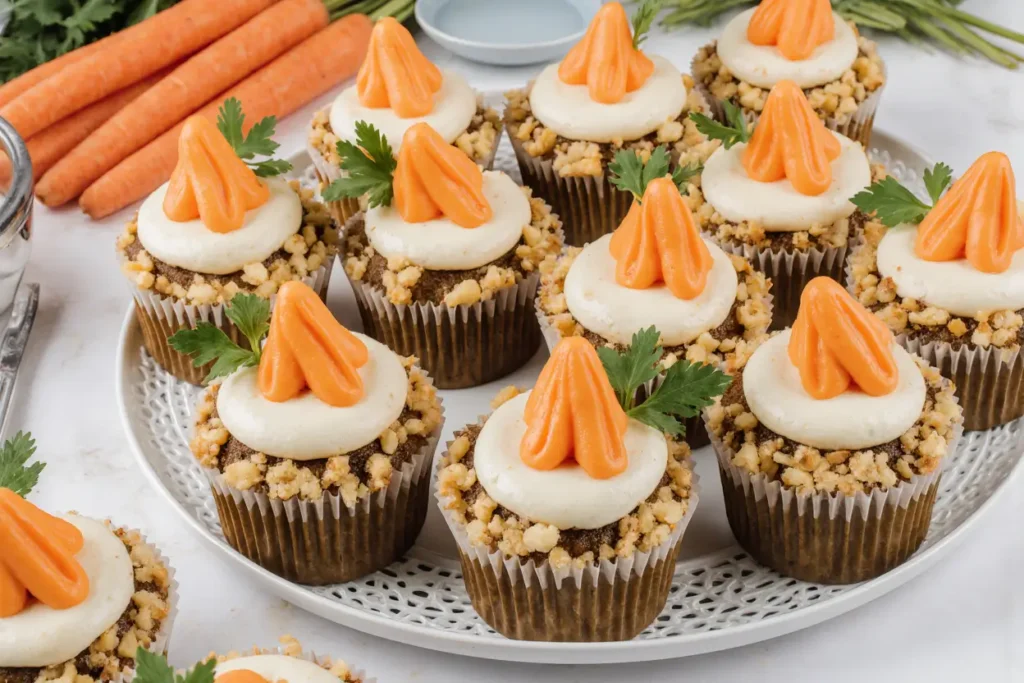
Storing Tips for the Recipe
Proper storage maintains freshness and extends enjoyment:
Room Temperature Storage: Store frosted cupcakes in an airtight container at room temperature for up to 3 days. Place them in a single layer to prevent frosting damage, and keep the container away from direct sunlight and heat sources. Room temperature storage maintains the softest texture and most vibrant flavors.
Refrigerator Storage: If your kitchen exceeds 72°F or your frosting contains perishable ingredients like cream cheese or fresh fruit, refrigerate cupcakes for up to 5 days. Bring them to room temperature 30 minutes before serving for optimal flavor and texture. Cold cupcakes taste less sweet and have firmer texture.
Freezing Unfrosted Cupcakes: Wrap cooled, unfrosted cupcakes individually in plastic wrap, then place in a freezer-safe bag. Freeze for up to 3 months. Thaw at room temperature for 1-2 hours before frosting and serving. Frosting freshly thawed cupcakes creates results indistinguishable from freshly baked ones.
Freezing Frosted Cupcakes: Place frosted cupcakes on a baking sheet and freeze until solid (about 2 hours). Once frozen, wrap individually or store in a single layer in an airtight container. Freeze for up to 2 months. Thaw in the refrigerator overnight, then bring to room temperature before serving.
Preventing Staleness: To refresh day-old cupcakes, microwave individual cupcakes for 8-10 seconds (without frosting) or warm in a 300°F oven for 5 minutes. This brief heating recrystallizes sugars and releases moisture, creating a just-baked texture.
Storing Components Separately: Bake cupcakes up to 2 days ahead and store unfrosted at room temperature. Prepare frosting up to 1 week ahead and refrigerate in an airtight container. Bring frosting to room temperature and rewhip briefly before using. This method works perfectly for event planning.
Maintaining Frosting Quality: If frosting develops a crust, gently scrape the top layer before serving or cover directly with plastic wrap pressed against the surface. Buttercream naturally forms a slight crust when exposed to air—this is normal and doesn’t indicate spoilage.
Conclusion
Mastering the art of perfect cupcakes transforms you from someone who follows recipes into a confident baker who understands the science behind every tender crumb. The comprehensive description and methodology you’ve learned today—from the critical importance of room-temperature ingredients to the precise timing that ensures consistent results—empowers you to create bakery-quality cupcakes in your own kitchen. Whether you’re preparing for a celebration, experimenting with new flavors, or simply indulging a sweet craving, these techniques guarantee success every time.
The beauty of cupcakes lies in their versatility and universal appeal. They’re portion-controlled treats that eliminate the need for cutting and serving, individual canvases for creative decoration, and surprisingly forgiving baking projects when you understand the fundamentals. Remember that even professional bakers experienced failures on their journey to perfection—each mistake provides valuable learning opportunities that improve your skills.
Now it’s your turn to experience the satisfaction of pulling a perfect batch from the oven. Start with this master recipe, then explore flavor variations, healthier modifications, and creative decorations that reflect your personal style. Share your results with friends and family, document your creations on social media, and most importantly, enjoy the process. Baking should bring joy, not stress.
Ready to start baking? Gather your ingredients, set aside 90 minutes, and create cupcakes that will impress even the toughest critics. Leave a comment below sharing your results, favorite flavor variations, or any questions that arise during the process. Don’t forget to explore our related content on advanced frosting techniques, flavor combinations, and troubleshooting common baking challenges. Your perfect cupcake journey begins now—make it delicious!
FAQs
Q: Can I make cupcakes without a stand mixer? A: Absolutely! While a stand mixer provides convenience, a hand mixer or even vigorous whisking by hand produces excellent results. The key is achieving proper creaming of butter and sugar (4-5 minutes with hand mixer, 7-8 minutes by hand) and avoiding overmixing once flour is added. Millions of successful cupcakes were made before electric mixers existed.
Q: Why did my cupcakes sink in the middle? A: Cupcakes sink for several reasons: opening the oven door too early causes temperature drops; using too much leavening creates excessive rise followed by collapse; underbaking leaves insufficient structure; or overmixing develops too much gluten. Ensure your oven temperature is accurate, measure ingredients precisely, and avoid opening the oven before the 15-minute mark.
Q: How do I achieve that perfect dome shape? A: Perfect domes result from proper oven temperature (350°F verified with a thermometer), filling liners exactly two-thirds full, and positioning the pan in the center rack. Room temperature ingredients also contribute to even rising. If your cupcakes consistently peak or flatten, adjust oven temperature by 25°F and test again.
Q: Can I substitute ingredients for dietary restrictions? A: Yes! For gluten-free cupcakes, use a 1:1 gluten-free flour blend designed for baking. For vegan versions, replace eggs with flax eggs (1 tablespoon ground flaxseed + 3 tablespoons water per egg) and use plant-based milk and butter. For dairy-free, substitute coconut oil for butter and almond or oat milk for regular milk. Each substitution slightly alters texture, but results are still delicious.
Q: How long can frosting sit at room temperature? A: Traditional buttercream made with butter, powdered sugar, and vanilla safely sits at room temperature for 2-3 days due to the high sugar content that inhibits bacterial growth. However, if your frosting contains cream cheese, fresh fruit, or whipped cream, refrigerate after 2 hours and consume within 3 days. Always err on the side of caution in warm climates.
Q: What’s the difference between cupcakes and muffins? A: Despite similar appearances, cupcakes are miniature cakes—sweeter, more refined, made with creamed butter and sugar, and typically frosted. Muffins are quick breads made with the muffin method (combining dry and wet ingredients separately, then mixing briefly), often include fruit or nuts, contain less sugar, and rarely have frosting. Think of cupcakes as dessert, muffins as breakfast.
Q: Can I double this recipe? A: Yes, this recipe doubles and triples successfully. When scaling up, maintain the same baking temperature and time, but bake in batches if necessary rather than overcrowding your oven. Proper air circulation is essential for even baking. Mixed batter sits at room temperature for up to 30 minutes without issues, allowing for batch baking.
Q: Why are my cupcakes dry? A: Dry cupcakes result from overbaking (even 2-3 minutes extra removes moisture), measuring flour incorrectly (too much flour absorbs liquid), or using low-fat substitutions without adjusting liquid ratios. Always check cupcakes at the minimum baking time, measure flour by weight when possible, and ensure ingredients are properly balanced. Adding an extra tablespoon of milk to the batter increases moisture if your environment is particularly dry.

